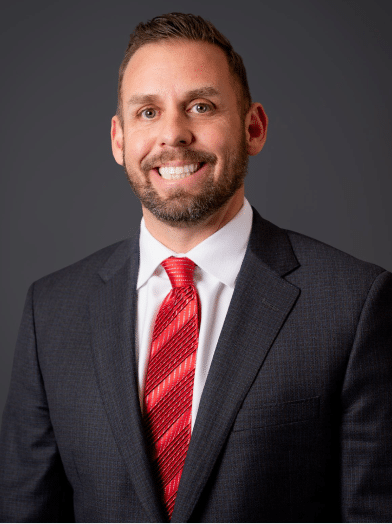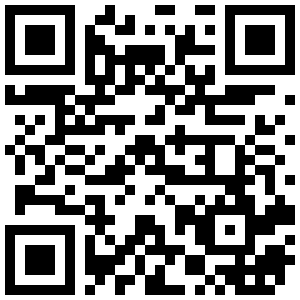
LAYTON OFFICE
1834 E 3100 N
Layton, UT 84040
Home • Layton Personal Injury Lawyer
When you have been injured because of someone else’s carelessness, you deserve more than legal representation. You deserve a team of warriors committed to winning your battle so you recover fair and full compensation. Our dedicated Layton personal injury lawyers are ready to provide you with an unmatched level of client service while aggressively protecting your rights at each stage in the litigation process.
Whether your injuries stem from a car accident, truck accident, motorcycle accident, or any other form of negligence, our experienced legal team is ready to fight for you. Call us today at 801.499.5060 to schedule your free consultation with one of our Utah personal injury lawyers.
Table of Contents
- Why Choose Feller & Wendt, LLC™ for Your Personal Injury Claim in Layton, Utah
- Testimonials from our Utah Injury Clients
- Types of Personal Injury Cases We Handle
- Damages Available in Personal Injury Cases
- How Long Do I Have to File a Claim?
- Can I Represent Myself?
- Should I Sue?
- Schedule Your Free Consultation with Our Experienced Layton Personal Injury Lawyers Today
- Related Pages
Why Choose Feller & Wendt, LLC™ for Your Personal Injury Claim in Layton, Utah
Our energetic, trial-tested injury lawyers in Layton are unwavering in our commitment to justice. Our mission is to give every client personalized attention and outstanding results because we truly care about every one of our clients. When you choose Feller & Wendt, LLC™, you become a part of our family. You will receive our personal cell phone numbers, so you can rest assured that we’ll always be there for you when you need us.

Feller & Wendt’s core focus is this: “We Care About People.” It’s something we live by and stand by day in and day out.
We’re more than passionate attorneys who care about your cause. We are a robust litigation team with the experience, resources, and network to get outstanding results when it counts. Our attorneys have over 70 years of combined experience and a 99 percent success rate in recovering compensation for our personal injury clients.
Our founder, Matt Feller, was born and raised in Layton. He has been litigating personal injury cases for 15 years. He understands our community and knows the legal landscape of Davis County.
Our Personal Injury Verdicts & Settlements
We go the extra mile to help you get the best result possible in your Layton accident case. Our skilled injury attorneys know what it takes to overcome the tactics of stubborn insurance companies and corporations that refuse to pay fair compensation. Below are just a few examples of the case results we consistently achieve for our deserving clients:
- $2.48 million for significant injuries in a truck accident
- $2.4 million for injuries brought on by negligent supervision in a hospital
- $1.75 million for injuries caused by medical malpractice
- $1.5 million for the family of a car accident victim who did not survive
- $680,000 in a carbon monoxide poisoning case
- $500,000 for the wrongful death of a child at youth basketball camp
- $362,500 for injuries caused by a boating accident on the Utah River
- $360,000 for the victim of nursing home abuse
- $300,000 for injuries sustained in a car accident
- $189,000 for injuries sustained in a motorcycle accident
- $145,000 for knee and shoulder injuries sustained in a slip and fall accident
Testimonials from our Utah Injury Clients
Types of Personal Injury Cases We Handle
If you or your loved one has suffered any kind of harm that can be traced back to someone else’s negligence, our dedicated attorneys can help. The most common types of injury claims we see in Layton are traffic accident claims, but we have decades of experience handling all types of personal injury cases.
Car Accidents
When a careless driver causes you harm, our knowledgeable car accident lawyers in Layton can help you file your no-fault insurance claim and your vehicle damage claim against the other driver’s policy. No-fault insurance provides limited coverage that may be adequate for minor accidents. When your injuries are serious, you may also be able to file a third-party claim against the at-fault driver’s insurance and other parties that contributed to your accident, resulting in higher compensation.
We understand how devastating a car accident can be, and we’ll be there for you to help you through it and hold the negligent parties accountable. You can count on us no matter what type of car accident caused your injuries, including:
- Texting and driving accidents
- Drunk driving accidents
- Hit-and-run accidents
- Rideshare accidents
- Icy road accidents
Truck Accidents
Due to their large size compared to passenger vehicles, truck accidents are among the most dangerous types of motor vehicle accidents. A truck can easily penetrate a car’s crumple zone, push a car into an intersection, or cause a vehicle fire, all of which can cause serious injuries or death.
Layton gets a high volume of truck traffic thanks to its location along Interstate 15 and near Interstate 84. Large trucking companies are often liable. They carry larger insurance policies than other types of drivers due to the high risk of serious injuries and extensive damage. As a result, compensation for a truck accident claim can be substantial.
Despite their higher insurance coverage, trucking companies often fight injured accident victims. However, they are no match for our proven team. As dedicated as trucking companies are to protecting their bottom line, our experienced Layton truck accident lawyers are even more dedicated to getting our clients the compensation they need to recover.
Motorcycle Accidents
Motorcycle riders are especially vulnerable in accidents because they lack the inherent crash protection of being in an enclosed vehicle. There are no crumple zones, seatbelts, or airbags to protect you from the impact of a crash. When a careless driver pulls out in front of you, strikes you from behind, or T-bones you, you have a high risk of being ejected from your motorcycle, being caught under the motorcycle, or being dragged along the roadside for a considerable distance.
As a result, motorcycle riders have a high risk of suffering traumatic brain injuries, severe burns, road rash, and disabling leg injuries. Motorcycle riders in Utah are excluded from the no-fault insurance program, and insurance companies are quick to blame motorcycle riders for accidents. You can count on our knowledgeable Layton motorcycle accident attorneys to be on your side.
Our Award-Winning Layton Personal Injury Attorneys Handle All Types of Personal Injury Claims
No matter how you were injured, if someone else’s carelessness or wrongful conduct is behind it, you can count on us to be there for you. In addition to car, truck, and motorcycle accidents, we handle the following types of personal injury claims in Layton:
This is not an exhaustive list. Contact us now to schedule your free consultation.
Damages Available in Personal Injury Cases
You may be eligible for economic and non-economic damages to compensate you for your injuries when someone else’s negligence is the cause. Economic damages are compensation for the financial costs of your injuries, such as the following:
- Medical expenses
- Future medical expenses
- Lost wages
- Loss of future earning capacity
- The cost of housekeeping or other domestic services
- Property damage
Non-economic damages are compensation for the effects your injury has on your quality of life. Non-economic damages include pain and suffering, scarring, disfigurement, emotional distress, loss of enjoyment of life, loss of bodily functions, and similar losses.
How Much Is My Layton Personal Injury Case Worth?
The amount you recover will vary based on the unique facts of your case, such as the severity of your injuries, the length of your recovery, the effects of your injuries on your quality of life, and the difference in your earning potential before and after the accident. We work with medical experts, life care planners, and others to ensure we account for every loss when calculating your case value.
Compensation for Fatal Injuries
If your loved one has died because of someone else’s negligence, our compassionate personal injury attorneys in Layton can help you recover economic and non-economic damages through a wrongful death claim. Utah allows immediate family members to recover any damages the court deems just in wrongful death claims, such as the following:
- The loss of your loved one’s probable lifetime earnings had they survived
- Funeral and burial expenses
- Your loved one’s medical expenses
- Your loved one’s pain and suffering
- Emotional distress of family members
- Loss of companionship
- Loss of parental guidance
- Loss of love and affection
How Long Do I Have to File a Claim?
Utah allows you to take up to four years to file a personal injury claim or up to two years to file a wrongful death claim. In either case, you should not wait to reach out to a personal injury attorney.
Waiting too long to contact an attorney can ultimately hurt your case value. Insurance companies start working from the beginning to protect their bottom line. As the statute of limitations draws closer, the insurance company will use tactics to stall your claim and seize the opportunity to lowball because of the threat of time running out.
It is normal to want to wait to see if the injury improves, but you have nothing to lose by contacting us sooner rather than later. We’ll handle every aspect of your claim, including dealing with the insurance company and ensuring you meet any deadlines. We work on a no-fee guarantee, meaning you pay nothing unless we win.
Can I Represent Myself?
You may be able to represent yourself in an accident claim, but doing so may lower your compensation. Insurance companies train adjusters to deal with people representing themselves in accident claims. Once you retain a law firm, they assign different adjusters who have the discretion to settle for higher amounts.
Whenever an individual that has been injured hires an attorney, they end up with 3.5 times more than they would have received had they not been represented by an attorney.
In addition to potentially undermining your case, representing yourself can also negatively affect your recovery. Dealing with the insurance company yourself can be time-consuming and draining when you are also coping with injuries. It is the last thing you need while trying to heal.
Insurance Companies Have Unfair Advantages Over Unrepresented Accident Victims
Insurance adjusters enjoy numerous advantages over unrepresented accident victims. Being the party with more to lose in any negotiation puts you at a disadvantage, and this is especially true of car accident claims. Insurance adjusters know you are in pain and need compensation urgently to cover medical bills and lost wages. They will take advantage of your urgency while posing as your ally during your weakest moments.
Insurance adjusters have superior knowledge of the law, the claims process, and the real value of your personal injury case. This puts you in a position of having to rely on the adjuster to understand the claims process. The adjusters can convince you to take actions that hurt your case, such as the following:
- Accepting lowball offers
- Signing away your rights
- Admitting to some level of fault
- Unknowingly undermining your injuries
- Giving recorded statements
The adjuster has access to all of the insurance company’s resources. When dealing with an adjuster, you are also going against the insurance company’s attorneys. Even with all of their advantages, insurance companies hire lawyers, and you should too.
Should I Sue?
Many of our clients have expressed that they don’t want to sue their neighbors or the nice old lady who rear-ended them. The good news is that when you choose Feller & Wendt, LLC™, we can help you recover significant compensation, and you probably won’t have to sue anyone. In 85 percent of our cases, we recover compensation without ever filing a lawsuit. Compensation generally comes from insurance companies, not from people.
Even if your case is one of the 15 percent that require the litigation process to start, it is highly unlikely that you will end up sitting in front of a judge and jury testifying about your accident. Approximately 95 percent of these cases are still resolved outside of court.
Schedule Your Free Consultation with Our Experienced Layton Personal Injury Lawyers Today
If you or your loved one has been injured in any type of accident in Layton or the surrounding areas, our robust litigation team is ready to take on your cause. With over 70 years of combined experience and over $85 million in successful case results, you can count on us to recover the compensation you deserve. Call us today at 801.499.5060 or contact us online to schedule your free, no-obligation case review, and let our family protect yours.
Related Pages
"*" indicates required fields
Receive A Free Case Evaluation
"*" indicates required fields
*This information provided by Feller & Wendt, LLC™ is for informational purposes only and should be in no way construed as legal advice.




